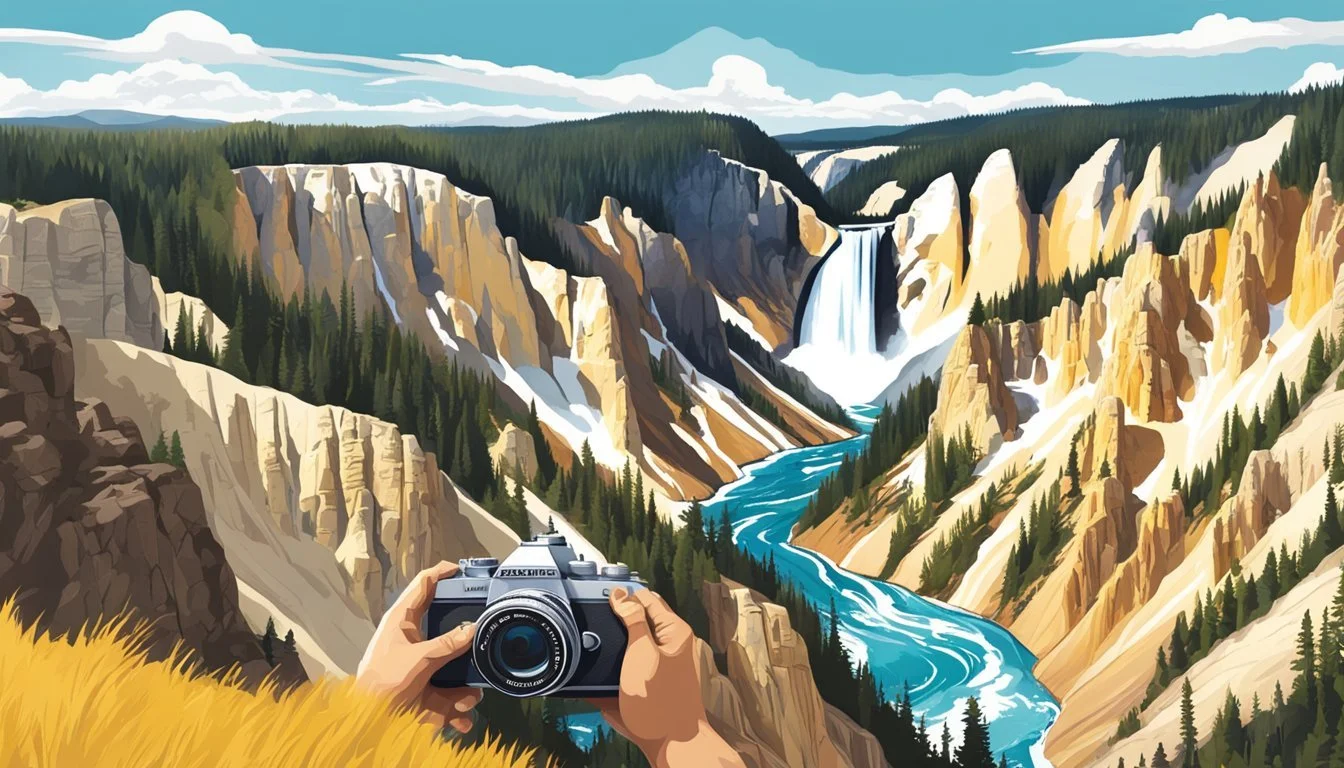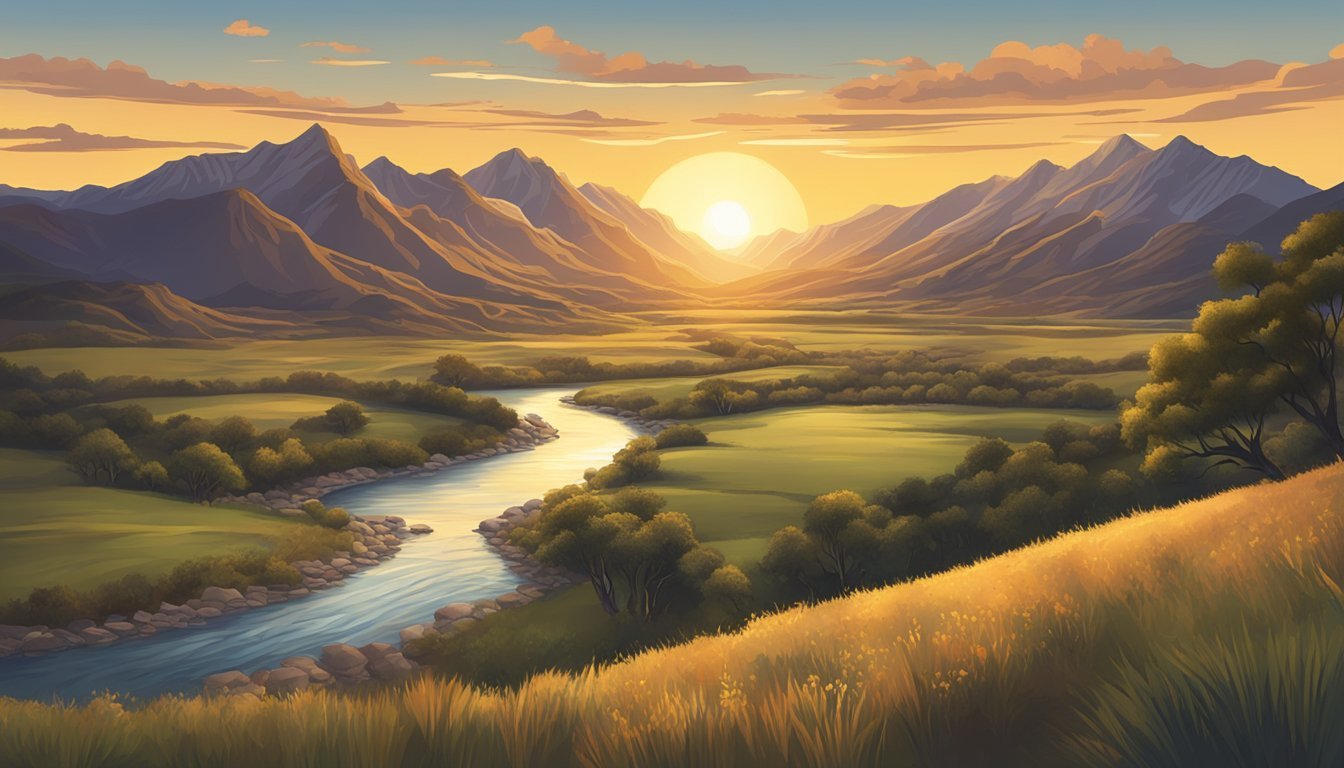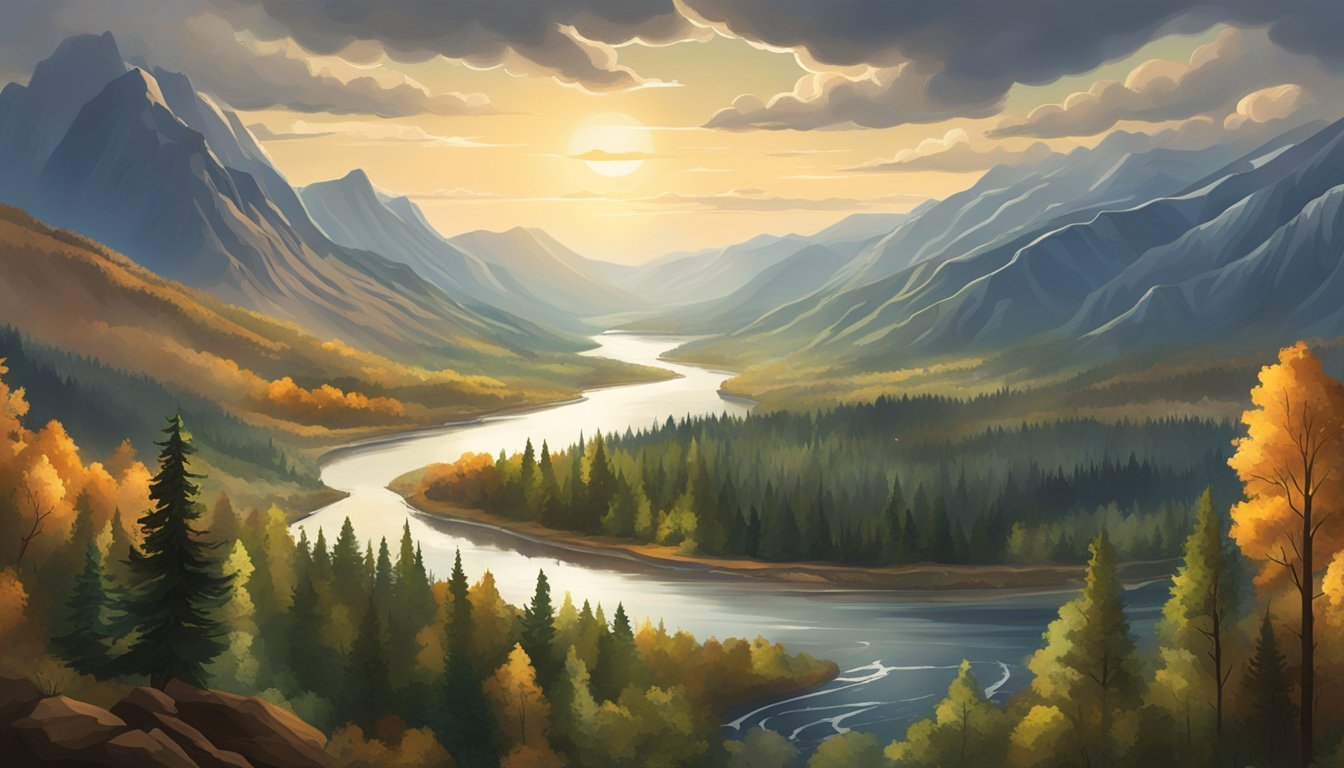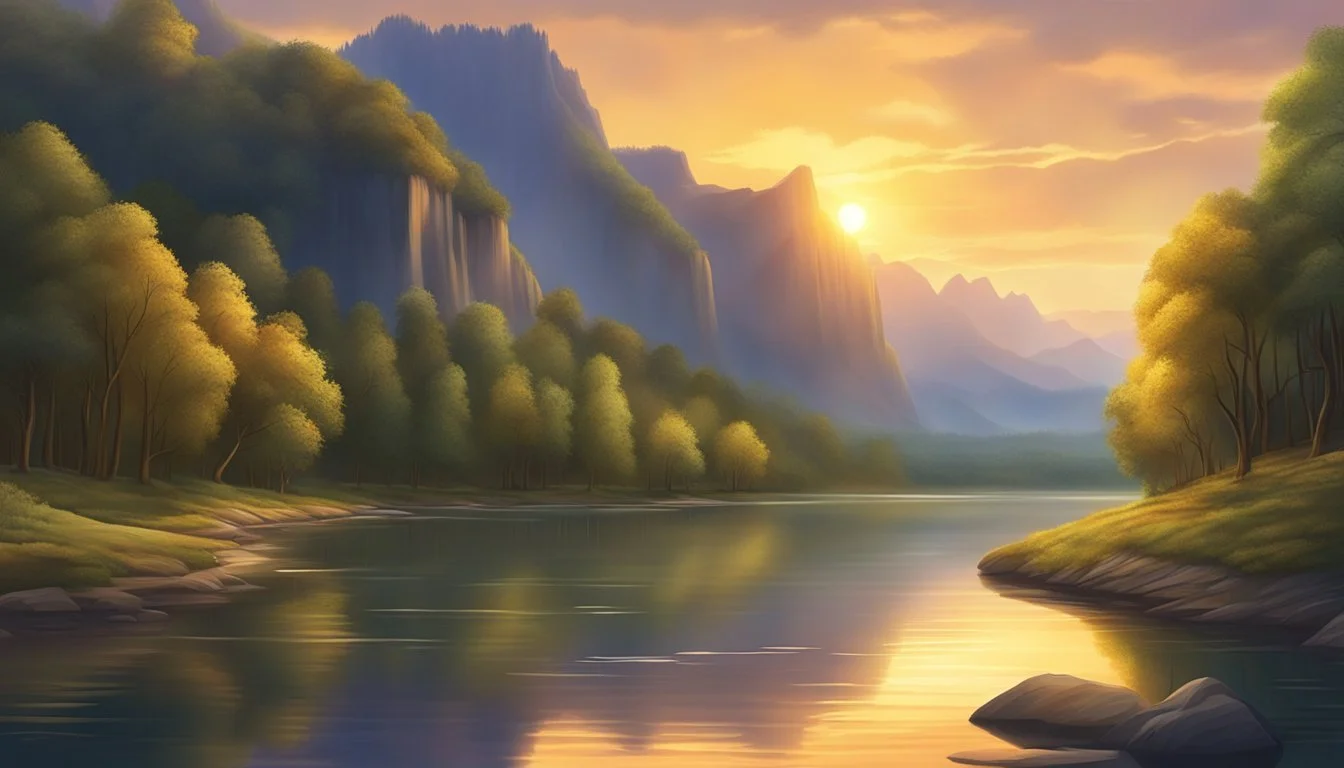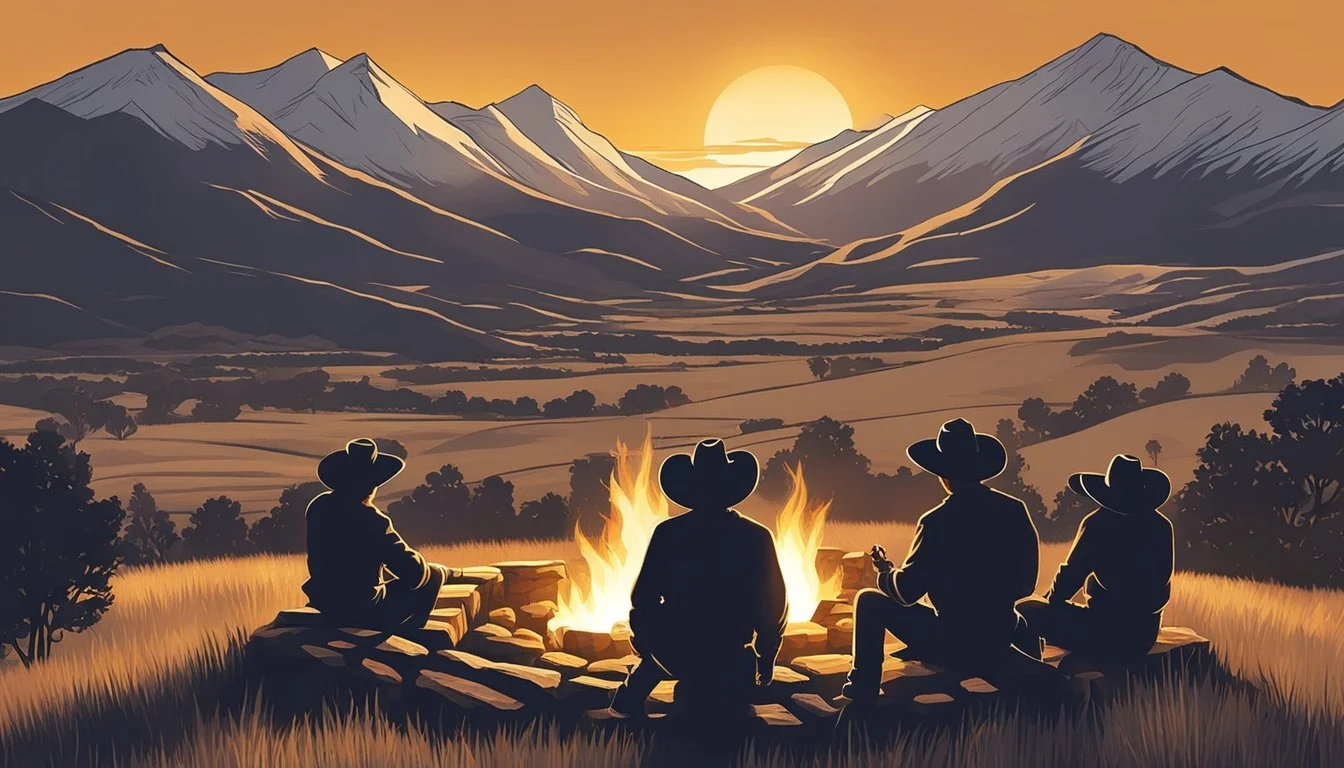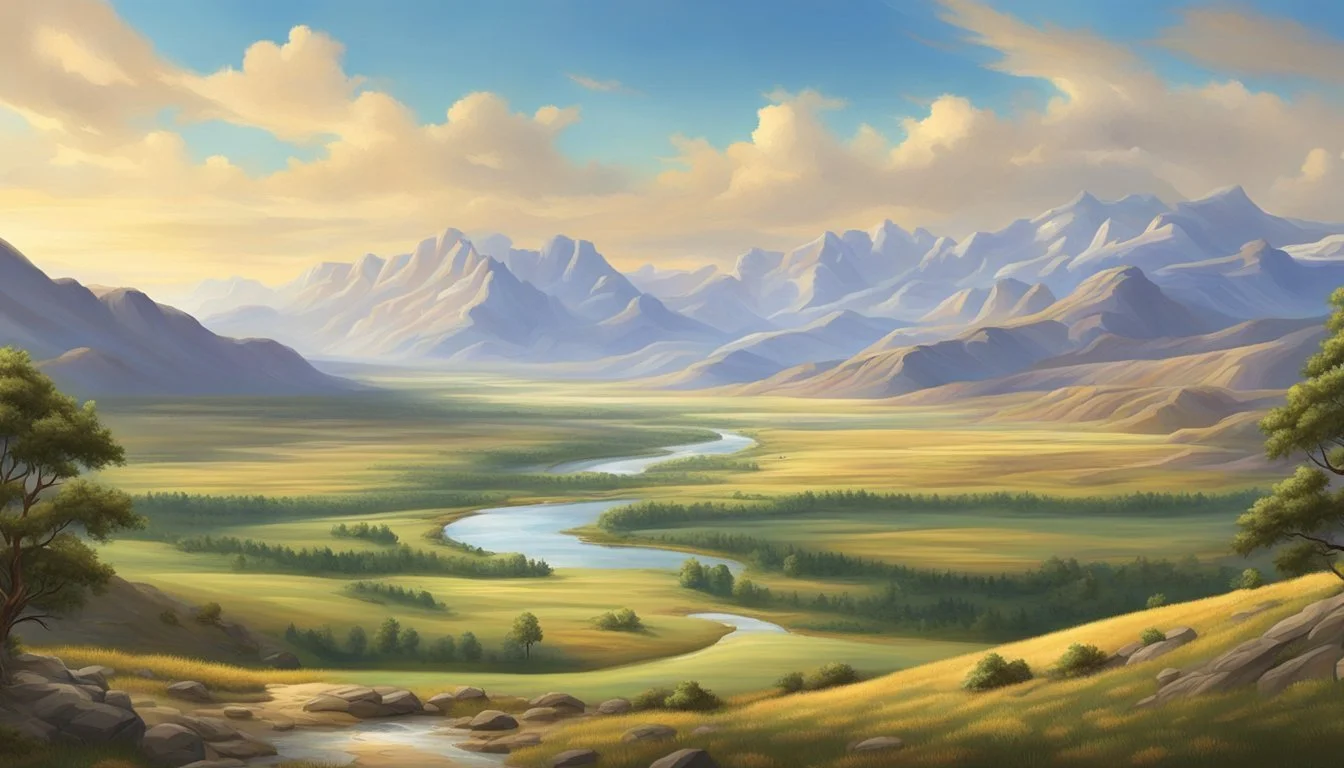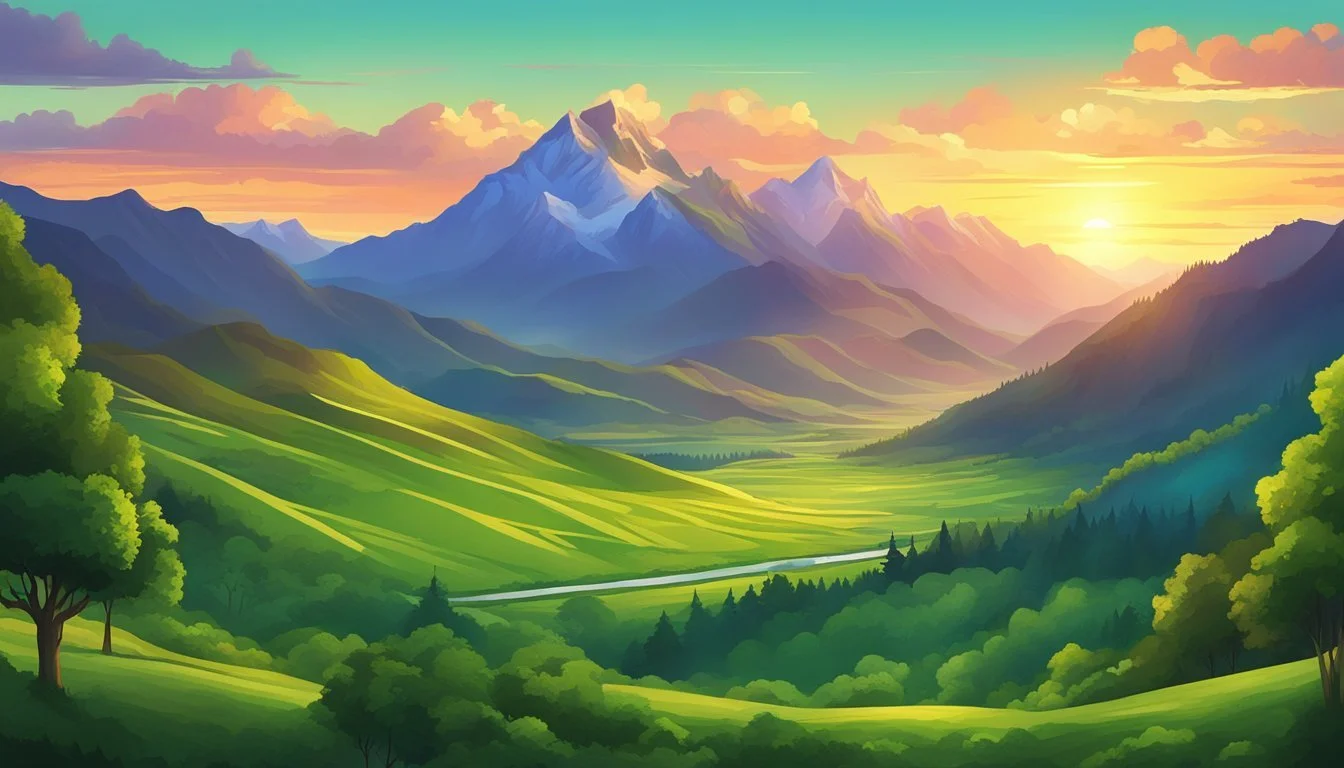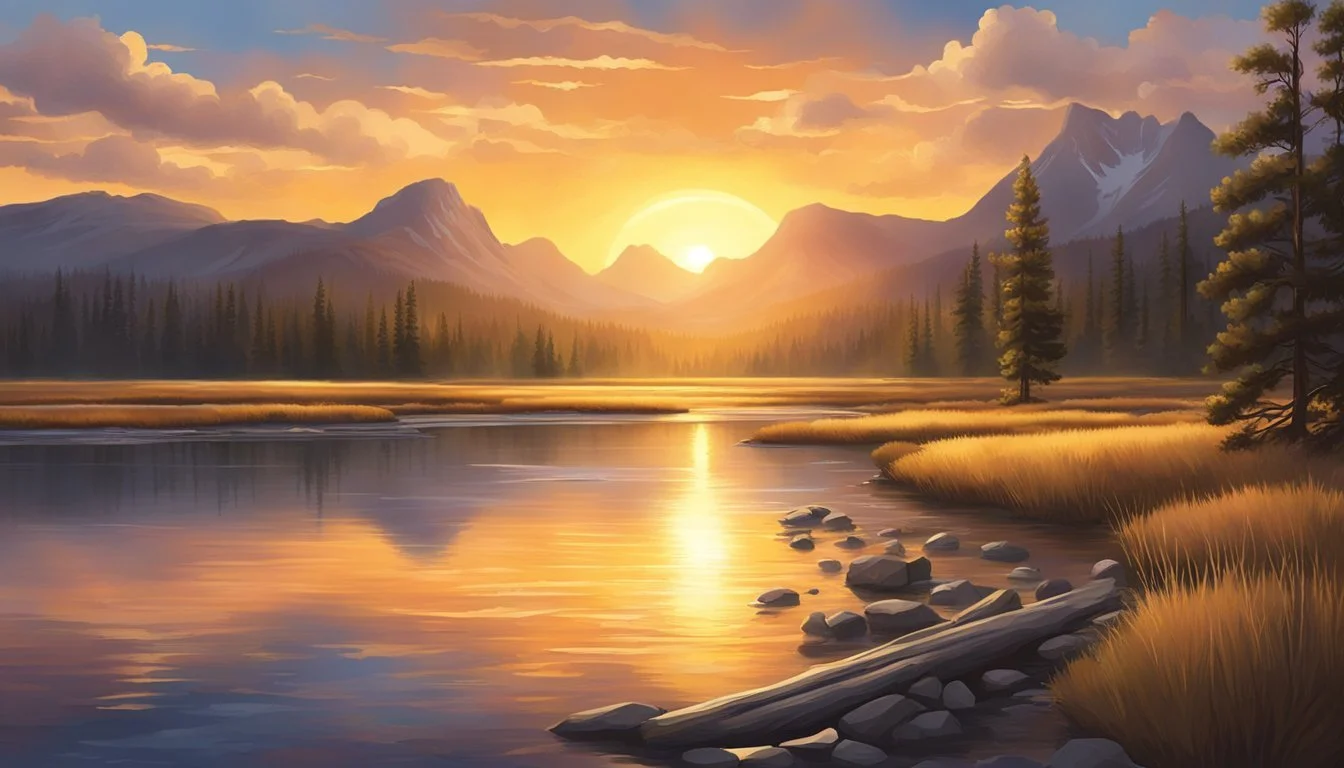13 Times Yellowstone's Cinematography Left Us in Awe
A Visual Journey Through Montana's Breathtaking Landscapes
Yellowstone has captivated audiences with its gripping storylines and complex characters since its debut in 2018. The critically acclaimed series, set against the backdrop of Montana's rugged landscapes, has become a cultural phenomenon.
Beyond its compelling narrative, Yellowstone's stunning visuals have played a crucial role in immersing viewers in the world of the Dutton family. The show's cinematography skillfully captures the raw beauty of the American West, elevating each scene and enhancing the emotional impact of the story. From sweeping vistas to intimate character moments, the visual artistry of Yellowstone has consistently impressed viewers and critics alike.
1) Sweeping Montana Landscapes
Yellowstone's cinematography shines in its depiction of Montana's vast landscapes. The show captures the state's natural beauty with breathtaking wide shots that showcase its diverse terrain.
Majestic mountain ranges dominate many scenes, their snow-capped peaks rising dramatically against blue skies. Rolling hills covered in golden grasses stretch to the horizon, creating a sense of endless space.
Pristine rivers wind through valleys, their crystal-clear waters reflecting the surrounding scenery. Dense forests of pine and aspen add depth and texture to the visual tapestry.
The changing seasons bring new dimensions to these landscapes. Spring wildflowers carpet meadows, while autumn paints the hills in vibrant reds and golds. Winter scenes transform familiar vistas into serene snowscapes.
Yellowstone's cinematographers expertly use natural light to enhance the beauty of these landscapes. Golden hour shots bathe the scenery in warm hues, while dramatic storm clouds create moody backdrops for pivotal scenes.
2) Golden Hour Mastery
Yellowstone's cinematographers excel at capturing the magic of golden hour. This fleeting period just before sunset bathes the Montana landscape in warm, ethereal light.
The show frequently features characters silhouetted against vibrant orange and pink skies. These shots create a sense of awe and highlight the rugged beauty of the Dutton ranch.
Skilled use of natural lighting during golden hour adds depth and texture to outdoor scenes. The low-angle sunlight accentuates the contours of rolling hills and distant mountains.
Close-ups of characters during this time reveal nuanced emotions, with faces softly illuminated by the fading daylight. This technique adds intimacy to pivotal moments in the story.
Wide landscape shots during golden hour showcase the vastness of the Montana setting. The interplay of light and shadow across valleys and prairies creates breathtaking visuals.
By consistently leveraging golden hour, Yellowstone's cinematography reinforces the show's themes of natural beauty and mankind's connection to the land. These stunning images have become a hallmark of the series.
3) Rugged Wilderness Shots
Yellowstone's cinematography truly shines when capturing the rugged wilderness of Montana and Wyoming. The show's creators expertly showcase the untamed beauty of the American West through breathtaking landscape shots.
Sweeping vistas of snow-capped mountains, rolling prairies, and dense forests transport viewers to the heart of Dutton Ranch territory. These scenes often serve as establishing shots, setting the tone for upcoming dramatic events.
The series frequently features aerial footage of winding rivers cutting through valleys, emphasizing the vast scale of the Yellowstone setting. These shots highlight the isolation and grandeur of the ranch's surroundings.
Close-up scenes of weathered rock formations and windswept plains add texture and depth to the visual narrative. The creators use natural light to great effect, capturing the golden hues of sunrise and sunset across the expansive terrain.
Wildlife encounters are also portrayed with stunning realism. Shots of grazing bison, elk herds, and prowling wolves underscore the wildness of the Yellowstone ecosystem, reminding viewers of the untamed nature that surrounds the characters.
4) Intimate Character Moments
Yellowstone's cinematography shines in capturing intimate character moments. The camera often lingers on close-ups of actors' faces, allowing viewers to see raw emotions and unspoken thoughts.
These quiet scenes provide a counterpoint to the show's sweeping vistas and action sequences. The lighting and framing in these moments create a sense of intimacy and vulnerability.
One standout example is a scene between Beth and Rip, where soft lighting and tight framing emphasize their connection. The camera work highlights subtle facial expressions and gestures, revealing depths to their relationship.
Similarly, shots of John Dutton alone on the ranch capture his internal struggles. The cinematography in these scenes uses natural light and wide angles to show his smallness against the vast landscape.
Yellowstone's visual style also excels in depicting tense family dinners. The camera moves smoothly between characters, capturing reactions and unspoken tensions across the table.
5) Dynamic Aerial Views
Yellowstone's cinematography soars to new heights with its breathtaking aerial shots. These sweeping views showcase Montana's vast landscapes in all their glory, offering viewers a bird's-eye perspective of the Dutton ranch and surrounding wilderness.
The series employs state-of-the-art drone technology to capture smooth, fluid movements across the terrain. These dynamic aerial sequences reveal the true scale of the ranch and its neighboring lands, emphasizing the grandeur of the setting.
From winding rivers to snow-capped mountains, the aerial cinematography highlights the diverse topography of the region. It creates a sense of awe and wonder, immersing viewers in the stunning natural beauty that serves as a backdrop to the show's intense drama.
These elevated shots also serve a narrative purpose, establishing the geographic relationships between key locations and emphasizing the isolation of the Dutton property. The aerial views effectively communicate the vastness of the land at stake in the series' central conflicts.
Through expert use of lighting and composition, Yellowstone's aerial cinematography transforms Montana's landscapes into visual poetry. These shots have become a signature element of the show, leaving viewers spellbound by the majestic vistas they reveal.
6) Authentic Western Atmosphere
Yellowstone's cinematography excels in capturing the essence of the modern American West. The show's visual style brings to life the rugged beauty of Montana's landscapes, from rolling prairies to snow-capped mountains.
The series meticulously crafts an authentic Western atmosphere through its attention to detail. Scenes of daily ranch life, including cattle drives and horse training, are filmed with a raw, unvarnished quality that feels true to the setting.
Natural lighting plays a crucial role in enhancing the authenticity of outdoor scenes. The golden hues of sunrise and sunset, along with the harsh midday sun, create a vivid backdrop for the unfolding drama.
The Chief Joseph Ranch in Darby, Montana, serves as the primary filming location for the Dutton ranch scenes. This working ranch lends a genuine Western flavor to the show's visuals, immersing viewers in a world of wide-open spaces and rustic charm.
Yellowstone's cinematography also highlights the contrast between the untamed wilderness and encroaching modernity. This visual juxtaposition reinforces the show's central themes and adds depth to its portrayal of the contemporary West.
7) Breathtaking River Views
Yellowstone's cinematography reaches new heights when capturing the show's river scenes. The series frequently showcases Montana's pristine waterways, offering viewers stunning vistas of rushing rapids and serene streams.
These river views serve as both breathtaking backdrops and integral elements of the storyline. The Yellowstone River, a central feature in many episodes, is portrayed with remarkable clarity and beauty.
Aerial shots sweep over winding rivers, revealing their path through rugged terrain and lush forests. Close-up scenes capture the play of light on rippling water surfaces, creating mesmerizing visual effects.
The show's cinematographers skillfully frame characters against these watery landscapes, enhancing emotional moments and emphasizing the characters' connection to the land. Fishing scenes are particularly notable, showcasing the crystal-clear waters and surrounding natural beauty.
Yellowstone's river views not only captivate viewers but also highlight the region's ecological importance. These scenes serve as a testament to the show's commitment to showcasing Montana's natural wonders.
8) Moody Lighting Choices
Yellowstone's cinematography excels in its use of moody lighting to enhance the atmosphere of key scenes. The show's creators skillfully employ low-key lighting techniques to create a sense of tension and drama.
Dimly lit interiors often feature characters partially shrouded in shadow, adding depth and mystery to their interactions. This approach is particularly effective in scenes set within the Dutton family ranch house.
Exterior night scenes make use of natural moonlight and practical sources like campfires to cast an eerie glow on characters' faces. This technique heightens the sense of isolation and danger in the Montana wilderness.
The series also utilizes backlighting to create striking silhouettes, emphasizing the rugged landscapes and iconic Western imagery. This approach is especially impactful during dawn and dusk sequences.
Yellowstone's lighting designers frequently opt for warm, amber tones to evoke a sense of nostalgia and tradition. This color palette reinforces the show's themes of preserving a way of life in the face of change.
9) Crisp Ranch Sequences
Yellowstone's cinematography shines in its crisp ranch sequences, showcasing the rugged beauty of Montana's landscape. The show's camera work captures the essence of ranch life with stunning clarity and precision.
Wide shots of sprawling pastures and cattle drives highlight the vastness of the Dutton ranch. The cinematographers skillfully frame scenes to emphasize the connection between the characters and their surroundings.
Close-ups of ranch work, like roping and branding, demonstrate the show's attention to detail. These sequences are filmed with a steady hand, allowing viewers to appreciate the skill and effort involved in daily ranch operations.
The changing seasons provide a dynamic backdrop for the ranch sequences. From sun-drenched summer days to snow-covered winter scenes, each shot is carefully composed to showcase the natural beauty of the region.
Yellowstone's cinematographers also excel at capturing the interplay of light and shadow across the ranch. Golden hour shots and dramatic sunsets add depth and richness to outdoor scenes, elevating them beyond mere establishing shots.
10) Seasonal Transitions Captured
Yellowstone's cinematography excels in portraying the passage of time through seasonal transitions. The show's visual storytelling captures Montana's ever-changing landscape with breathtaking precision.
Lush green summers give way to vibrant autumn colors, showcasing the Dutton ranch's expansive vistas. The transition to winter brings stark, snow-covered plains and frost-tipped mountains, creating a dramatic backdrop for the unfolding drama.
These seasonal shifts are not merely aesthetic choices. They serve as visual metaphors for character arcs and plot developments. The harsh winter scenes often coincide with challenging times for the Dutton family, while spring's renewal parallels moments of hope and new beginnings.
The cinematographers' skill in capturing these transitions is evident in seamless time-lapse sequences and carefully composed shots. They highlight the ranch's transformation throughout the year, from blooming wildflowers to barren fields blanketed in snow.
This attention to seasonal detail adds depth to the storytelling, immersing viewers in the world of Yellowstone. It reinforces the show's themes of nature's power and the cyclical nature of life on the ranch.
11) Vivid Color Palette
Yellowstone's cinematography employs a striking vivid color palette that brings Montana's landscapes to life on screen. The show's visual artists skillfully utilize rich, saturated hues to enhance the natural beauty of the surroundings.
Deep blues of vast skies contrast with the warm oranges and reds of sunsets, creating breathtaking scenes. Lush greens of forests and meadows pop against the earthy browns of rugged mountains and valleys.
The series often features golden hour shots, bathing characters and landscapes in a warm, amber glow. This technique adds depth and dimension to the visuals while evoking a sense of nostalgia.
Careful color grading in post-production further accentuates the vibrancy of each frame. The result is a visual feast that captivates viewers and immerses them in the world of the Dutton ranch.
Yellowstone's bold use of color extends beyond nature, incorporating vivid elements in costumes and set design. This cohesive approach creates a distinctive visual style that has become synonymous with the show's identity.
12) Snowy Terrain Cinematics
Yellowstone's portrayal of snow-covered landscapes is nothing short of breathtaking. The series captures the stark beauty of Montana's winter wonderland with stunning precision and artistry.
Wide shots showcase vast expanses of pristine white snow, punctuated by the dark silhouettes of trees and mountains. These scenes evoke a sense of isolation and wilderness that perfectly complements the show's themes.
Close-up shots reveal intricate details of snowflakes and ice crystals, adding texture and depth to the wintry scenes. The cinematographers skillfully use natural light to create a soft, ethereal glow that enhances the snow's magical quality.
The contrast between the crisp white snow and the rich colors of the characters' clothing creates visually striking compositions. This technique draws the viewer's eye to the human elements within the stark landscape.
Dynamic shots of characters trudging through deep snow or riding horses across snow-covered plains add a sense of movement and struggle against the elements. These scenes effectively convey the harsh realities of winter life in Montana.
13) Epic Horseback Scenes
Yellowstone's cinematic brilliance shines through in its breathtaking horseback scenes. The show's creators masterfully capture the essence of ranch life, showcasing the bond between riders and their steeds.
These scenes often feature sweeping panoramas of Montana's rugged landscape. Viewers are treated to stunning vistas as characters gallop across open fields or navigate treacherous mountain trails.
The cinematography skillfully conveys the power and grace of horses in motion. Slow-motion shots highlight the rippling muscles and flowing manes of these majestic animals.
Close-up shots of riders' faces reveal their emotions, from determination to exhilaration. These intimate moments connect the audience with the characters' experiences on horseback.
Action-packed sequences, such as high-speed chases or cattle drives, demonstrate the show's technical prowess. Multiple camera angles and dynamic editing create a sense of urgency and excitement.
Yellowstone's horseback scenes also serve as a visual metaphor for freedom and the untamed spirit of the West. They remind viewers of the integral role horses play in ranch life and cowboy culture.
The Art of Cinematic Storytelling
Yellowstone's visual narratives captivate viewers through masterful cinematography and thoughtful use of Montana's landscapes. The show's creators employ sophisticated techniques to enhance storytelling and immerse audiences in the world of the Dutton family.
Visual Language and Themes
Yellowstone's cinematography establishes a distinct visual language that reinforces the show's themes. Wide-angle shots emphasize the vastness of the ranch, highlighting the Duttons' connection to the land. Intimate close-ups reveal character emotions, adding depth to pivotal moments.
The use of color grading plays a crucial role in setting the tone. Warm golden hues evoke nostalgia for the Old West, while cooler tones signal impending conflicts. Dynamic camera movements, from sweeping pans to handheld shots, mirror the intensity of action sequences.
Lighting techniques further enhance the storytelling. Harsh shadows in tense confrontations create a sense of danger, while soft natural light in quieter scenes reflects moments of contemplation or vulnerability.
Use of Natural Landscapes
Montana's breathtaking scenery serves as a character in itself, with Yellowstone's cinematographers skillfully showcasing its beauty and power. Aerial shots capture the expansive vistas, emphasizing the ranch's isolation and the challenges of preserving such vast territory.
The changing seasons provide a visual backdrop that mirrors the story's progression. Lush summer pastures give way to snow-covered peaks, reflecting the harsh realities faced by the characters.
Time-lapse sequences of dramatic skies and shifting light showcase nature's unpredictability, echoing the show's themes of change and adaptation. Carefully framed shots of wildlife intercut with human drama underscore the delicate balance between civilization and wilderness.
Techniques Enhancing Yellowstone's Visual Appeal
Yellowstone's cinematography employs sophisticated techniques to capture the raw beauty of Montana's landscapes. These methods elevate the visual storytelling and immerse viewers in the show's rugged world.
Camera Angles and Movement
Wide-angle shots showcase Yellowstone's vast, breathtaking vistas. These expansive frames highlight snow-capped peaks, pristine rivers, and sprawling plains, emphasizing the grandeur of the American West.
Low-angle shots make characters appear larger-than-life against the dramatic backdrop, reinforcing their connection to the land.
Tracking shots follow characters on horseback or in vehicles, creating a sense of movement and scale. This technique allows viewers to experience the terrain alongside the characters.
Aerial cinematography provides stunning overhead views of the Dutton ranch and surrounding wilderness. Drones capture sweeping panoramas that would be impossible to achieve with traditional ground-based cameras.
Lighting Techniques
Natural lighting plays a crucial role in Yellowstone's visual appeal. Cinematographers take advantage of the "golden hour" - the period shortly after sunrise or before sunset - to bathe scenes in warm, soft light.
Backlit shots create silhouettes of characters and landscapes, adding drama and emphasizing the rugged beauty of the environment.
Practical lighting from sources like campfires, lanterns, and ranch buildings adds authenticity to nighttime scenes. This approach creates a moody atmosphere while maintaining the show's realistic aesthetic.
High-contrast lighting in interior shots, particularly during tense confrontations, enhances the drama and underscores character emotions.

